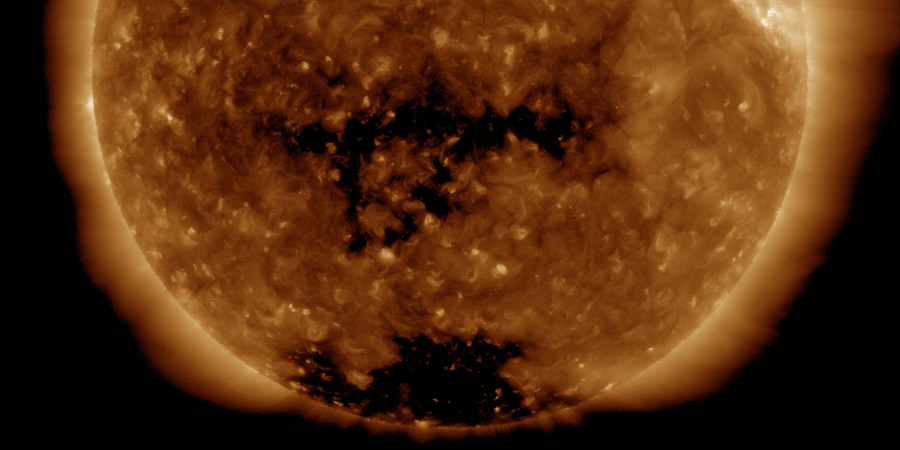Coronal hole faces Earth, G1 watch
Sunday, 24 February 2019 20:19 UTC

It's that time of the month again as we have a familiar coronal hole facing our planet today that should influence the solar wind environment around our planet for a couple of days at the end of this month, and the beginning of next month.
Compared to the previous rotation we have to conclude that this coronal hole did shrink in size and now has a mostly east-west orientation. This coronal hole was responsible for a minor G1 geomagnetic storm on 31 January.
According to STEREO Ahead which measured the solar wind coming from this coronal hole last week we can expect the strength of the interplanetary magnetic field (Bt) to peak near 20nT with a maximum southward deflection of the Bz just below -10nT. Solar wind speeds are expected to top somewhere between the 550 to 600km/s. This data from STEREO Ahead gives us an indication as to what to expect here at Earth.
The solar wind stream flowing from this coronal hole is likely to influence our planet starting this Wednesday which would be 27 February. We expect active geomagnetic conditions (Kp4) with a slight chance of minor G1 geomagnetic storming conditions but considering the east-west orientation of this coronal hole we should expect lingering for multiple days after 27 February.
The NOAA SWPC has issued a moderate G1 geomagnetic storm watch for this Wednesday, 27 February. If you want to learn more about coronal holes please check out this help article.
Thank you for reading this article! Did you have any trouble with the technical terms used in this article? Our help section is the place to be where you can find in-depth articles, a FAQ and a list with common abbreviations. Still puzzled? Just post on our forum where we will help you the best we can!
Latest news
Latest forum messages
Support SpaceWeatherLive.com!
A lot of people come to SpaceWeatherLive to follow the Sun's activity or if there is aurora to be seen, but with more traffic comes higher server costs. Consider a donation if you enjoy SpaceWeatherLive so we can keep the website online!

Space weather facts
| Last X-flare | 2024/03/28 | X1.1 |
| Last M-flare | 2024/04/18 | M1.2 |
| Last geomagnetic storm | 2024/04/16 | Kp5 (G1) |
| Spotless days | |
|---|---|
| Last spotless day | 2022/06/08 |
| Monthly mean Sunspot Number | |
|---|---|
| March 2024 | 104.9 -19.8 |


